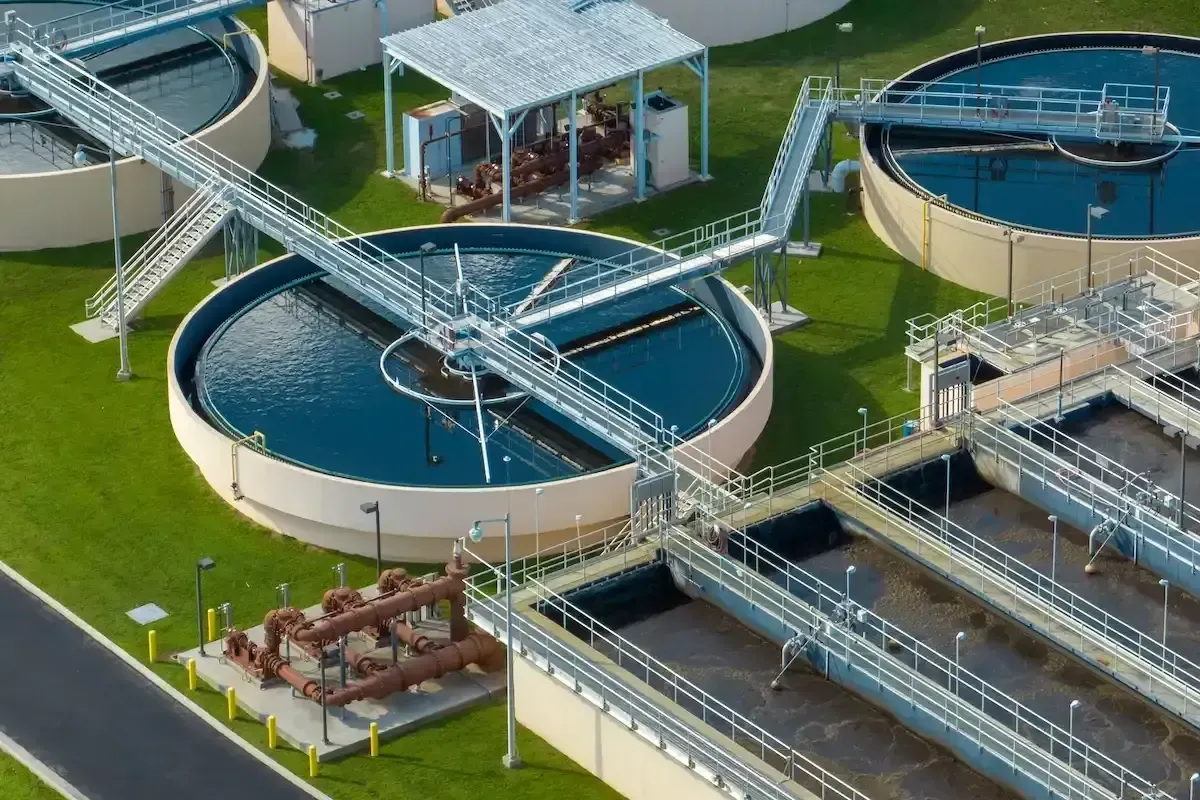Cities are hubs of human activity, driving economic growth, innovation, and cultural exchange. However, rapid urbanization brings pressing challenges—from water scarcity and public health risks to environmental degradation—all of which test the effectiveness of urban management. Among the solutions to these challenges,wastewater treatmentstands out as a cornerstone: it does not merely “clean dirty water” but acts as a multi-functional pillar that safeguards water resources, public health, ecosystems, and long-term urban sustainability. For city administrators, policymakers, and stakeholders, understanding its role is key to building resilient, livable cities. Below is a detailed exploration of how wastewater treatment shapes modern urban management.

1. Wastewater Treatment: The Core Link for Urban Water Cycle
Water scarcity is one of the most critical bottlenecks in urban development. As cities grow, demand for freshwater (for domestic use, industry, and agriculture) surges, while over-extraction of groundwater leads to land subsidence and depleted aquifers. Wastewater treatment reverses this unsustainable cycle by turning “waste” into a reusable resource—addressing both water shortage and resource waste.
- Recycling water for urban needs: Treated wastewater (often called “reclaimed water”) is a cost-effective alternative to freshwater for non-potable uses. Cities worldwide use it for industrial cooling (e.g., in manufacturing plants), municipal greening (watering parks and roads), and even agricultural irrigation. For example, Singapore’sNEWater programtreats wastewater to drinking-water standards, meeting 40% of the city-state’s water demand—turning a water-scarce nation into a model of water self-sufficiency.
- Reducing reliance on freshwater sources: By diverting reclaimed water to non-drinking applications, cities free up freshwater for human consumption and critical industries. This reduces pressure on rivers, lakes, and groundwater, ensuring these sources remain viable for future generations.
- Preventing freshwater pollution: Untreated wastewater contains harmful contaminants (organic matter, heavy metals, and pathogens) that seep into soil or flow into rivers, polluting freshwater reserves. Wastewater treatment plants (WWTPs) remove these pollutants before discharge, protecting the quality of urban water sources.
2. Safeguarding Public Health: Wastewater Treatment as a Health Barrier
Public health is a foundational goal of urban management. Wastewater—especially domestic sewage—carries a cocktail of pathogens (e.g.,E. coli, cholera bacteria, and hepatitis viruses) and toxic substances that pose severe health risks if left unmanaged. Wastewater treatment acts as a frontline defense against waterborne diseases and environmental toxicity.
- Eliminating waterborne pathogens: WWTPs use physical (screening, sedimentation), chemical (disinfection with chlorine or ozone), and biological (using microbes to break down organic matter) processes to kill or remove pathogens. This prevents contaminated water from entering public waterways or seeping into groundwater, where it could infect humans via drinking water or recreational contact.
- Reducing exposure to toxic substances: Industrial wastewater often contains heavy metals (lead, mercury) and synthetic chemicals (pesticides, pharmaceuticals) that accumulate in the human body over time, causing chronic illnesses like cancer or organ damage. Advanced treatment technologies (e.g., membrane filtration, activated carbon adsorption) remove these toxins, minimizing public exposure.
- Improving living conditions in dense areas: In high-density cities, where sewage systems are often overloaded, untreated wastewater can overflow into streets or residential areas—creating unsanitary conditions. WWTPs ensure consistent wastewater collection and treatment, reducing the risk of disease outbreaks and improving quality of life for residents.
A case in point: In Mumbai, India, expanding wastewater treatment capacity from 30% to 70% of daily sewage production between 2010 and 2020 led to a 52% drop in waterborne disease cases (e.g., typhoid and diarrhea), according to local health department data.
3. Protecting Urban Ecosystems: Mitigating Environmental Degradation
Cities are not isolated from nature—they depend on healthy ecosystems for clean air, pollination, and climate regulation. Untreated wastewater is a major driver of urban ecological damage, but wastewater treatment helps restore and preserve these vital systems.
- Preventing aquatic ecosystem collapse: When untreated wastewater flows into rivers, lakes, or coastal waters, it introduces excess nutrients (nitrogen, phosphorus). These nutrients causeeutrophication—a process where algae overgrow, depleting oxygen in the water and killing fish, plants, and other aquatic life (known as “dead zones”). WWTPs remove up to 90% of these nutrients, protecting urban water bodies. For example, China’s efforts to upgrade WWTPs along the Yangtze River have helped restore 200 km of river stretches, bringing back native fish species like the Chinese sturgeon.
- Preserving soil quality: Reclaimed water, when treated to safe standards, can be used for agricultural irrigation or urban landscaping. Unlike untreated wastewater, it does not introduce heavy metals or pathogens into the soil, preventing soil contamination and ensuring long-term fertility. This is especially important for cities with surrounding farmlands that supply local food.
- Reducing plastic and microplastic pollution: Modern WWTPs include advanced screening and filtration systems that capture plastic debris and microplastics (tiny plastic particles from cosmetics or clothing). By trapping these pollutants, WWTPs prevent them from entering oceans or food chains—addressing a global environmental crisis while keeping urban areas clean.
4. Boosting Urban Economic Sustainability: Cutting Costs and Driving Growth
Sustainable urban management requires balancing environmental protection with economic vitality—and wastewater treatment delivers on both fronts. It reduces long-term costs for cities, creates new industries, and enhances a city’s attractiveness to investors and talent.
- Lowering water and treatment costs for businesses: For water-intensive industries (e.g., manufacturing, energy production), reclaimed water is cheaper than freshwater and often requires less treatment for industrial use. This cuts operational costs for businesses, boosting their competitiveness and encouraging investment in the city. For example, in Los Angeles, California, factories using reclaimed water save up to $0.50 per cubic meter compared to using tap water—translating to millions in annual savings.
- Creating jobs in the green economy: Wastewater treatment drives job growth across the value chain, from WWTP construction and operation to theresearch and development(R&D) of advanced treatment technologies. The Global Water Institute estimates that every $1 million invested in wastewater infrastructure creates 15–20 full-time jobs. In Europe, the water and wastewater sector employs over 2 million people, supporting local economies.
- Enhancing urban livability and property values: Clean waterways, reduced pollution, and improved public health make cities more attractive places to live and work. This boosts property values, attracts tourists, and retains skilled talent—key drivers of long-term economic growth. Cities like Copenhagen, Denmark, which have invested heavily in wastewater treatment and river restoration, now rank among the world’s most livable cities, drawing global businesses and expats.
5. Supporting Climate Resilience: Wastewater Treatment in Climate Action
Climate change exacerbates urban challenges—from more frequent droughts to extreme rainfall and flooding. Wastewater treatment plays a critical role in helping cities adapt to and mitigate climate change.
- Reducing greenhouse gas emissions: Untreated wastewater decomposes anaerobically (without oxygen) in landfills or water bodies, releasing methane—a greenhouse gas 28 times more potent than carbon dioxide over 100 years. Modern WWTPs capture methane during the treatment process and use it to generate electricity or heat (a practice called “biogas recovery”). For example, New York City’s North River WWTP produces enough biogas to power 2,500 homes annually, cutting carbon emissions by 90,000 tons per year.
- Building water resilience during droughts: As droughts become more common, reclaimed water acts as a reliable backup supply for cities. During California’s 2012–2016 drought, cities like San Diego increased reclaimed water use by 30%, avoiding mandatory water restrictions and ensuring continuity for businesses and residents.
- Reducing flood risks: WWTPs are often integrated with urban drainage systems. By treating and diverting wastewater efficiently, they prevent sewage overflows during heavy rains—reducing flood damage to homes, roads, and infrastructure. In Rotterdam, the Netherlands, a state-of-the-art WWTP is part of the city’s “climate-proof” strategy, helping manage flood risks while treating 800,000 cubic meters of wastewater daily.
The Future: Smart Wastewater Treatment for Modern Urban Management
As cities embrace digital transformation, wastewater treatment is evolving into a “smart” system—integrated with IoT (Internet of Things), big data, and AI—to enhance efficiency and align with smart city goals.
- Real-time monitoring and optimization: IoT sensors in WWTPs track water quality, flow rates, and energy use in real time. AI algorithms analyze this data to adjust treatment processes (e.g., optimizing chemical dosages or energy consumption), reducing costs and improving performance.
- Integration with urban data platforms: Smart WWTPs share data with city management systems, allowing administrators to make holistic decisions about water use, environmental protection, and public health. For example, if sensors detect high levels of a toxic chemical in wastewater, the system can alert authorities to investigate potential industrial pollution sources.
Conclusion
Wastewater treatment is far more than a “utility service”—it is a strategic asset in urban management. It addresses water scarcity, protects public health, preserves ecosystems, drives economic growth, and builds climate resilience—all while laying the groundwork for sustainable, livable cities. For city leaders, investing in wastewater infrastructure is not just an environmental choice; it is an investment in the long-term prosperity and resilience of their communities. As urbanization accelerates, the role of wastewater treatment will only grow—making it indispensable to the future of urban management.
